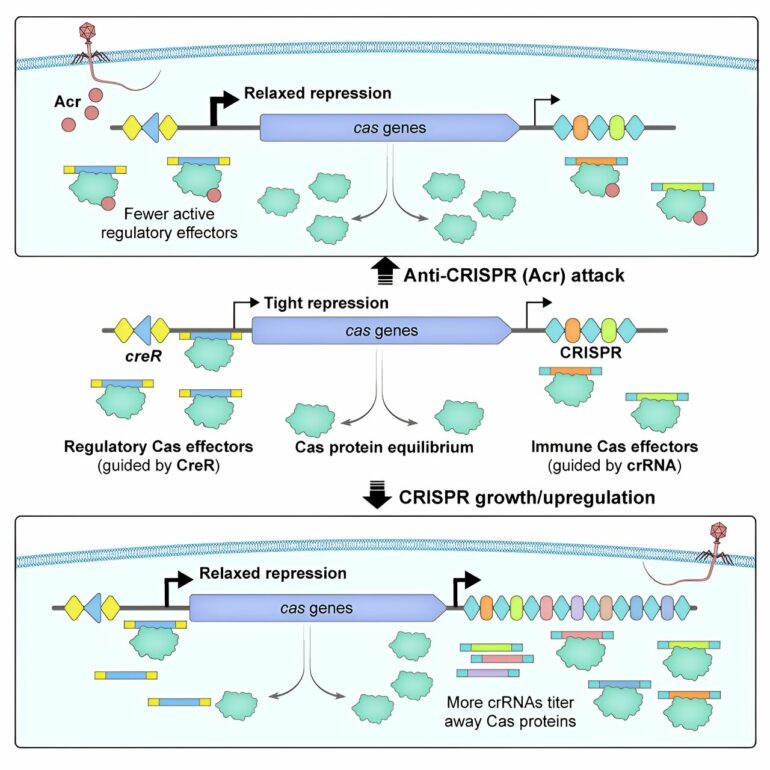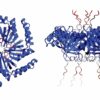How the expression of Cas proteins in bacterial CRISPR-Cas immune system adapts to the constantly changing CRISPR structures and crRNA expression levels has been a long-standing unresolved question.
Prof. Li Ming and Prof. Xiang Hua’s lab at Institute of Microbiology of the Chinese Academy of Sciences have unraveled novel physiological functions of the guard RNA of CRISPR-Cas and provided a clue for this question. This work was published in Cell Host & Microbe.
The researchers first reported the guard RNA of CRISPR-Cas in 2021, which is a pair of CRISPR-Cas-regulated dual RNA toxin-antitoxin, named CreTA (CRISPR-regulated toxin-antitoxin).
In this study, the researchers further discovered that the antitoxin crRNA-resembling antitoxin (CreA) not only guides Cas proteins to suppress the expression of the toxin gene creT, making the bacterial cells become “addicted” to Cas proteins (once Cas proteins are inactivated or inhibited, the toxin will be expressed and kill the bacterial cells), but also mediates the self-inhibitory regulatory circuit of Cas proteins, effectively avoiding the energy burden and self-immunity risk (targeting self-DNA) caused by excessive expression of Cas proteins.
Through extensive bioinformatics analysis, Cas-regulating RNA (CreR, lacking the coupling CreT toxin), a similar molecule to CreA, was found to be widely presented in Class 1 and Class 2 CRISPR systems.
More importantly, these CreR (or CreA) molecules can mediate the autoregulation of Cas proteins, not only sensing the concentration of intracellular crRNA and achieving their coordinated expression, but also effectively sensing the anti-CRISPR (Acr) proteins encoded by phages, thereby rapidly activating the high-level expression of Cas proteins in response to Acr attacks.
This work not only provides a new perspective on how CRISPR-Cas coordinates the expression of crRNA and Cas proteins, a fundamental question in this field, but also reveals a new transcription-level anti-anti-CRISPR strategy.
More information:
Chao Liu et al, Widespread RNA-based cas regulation monitors crRNA abundance and anti-CRISPR proteins, Cell Host & Microbe (2023). DOI: 10.1016/j.chom.2023.08.005
Provided by
Chinese Academy of Sciences
Citation:
Researchers uncover novel physiological functions of CRISPR-Cas guard RNA (2023, September 8)



